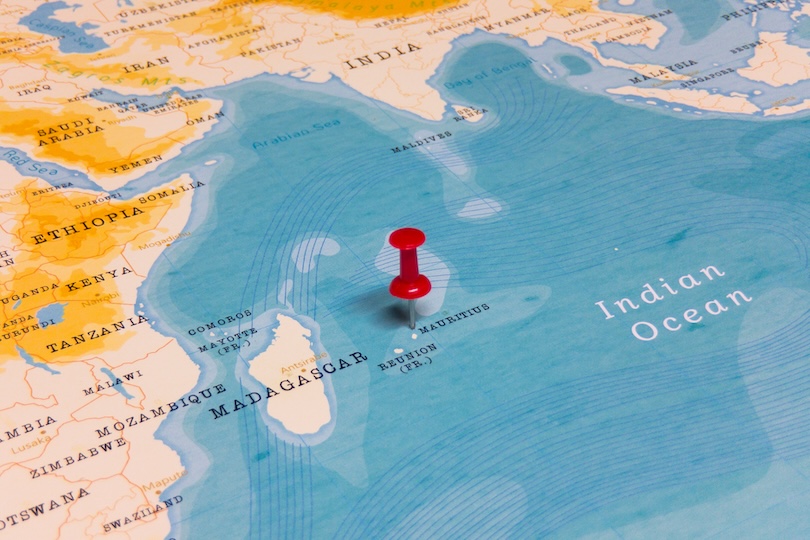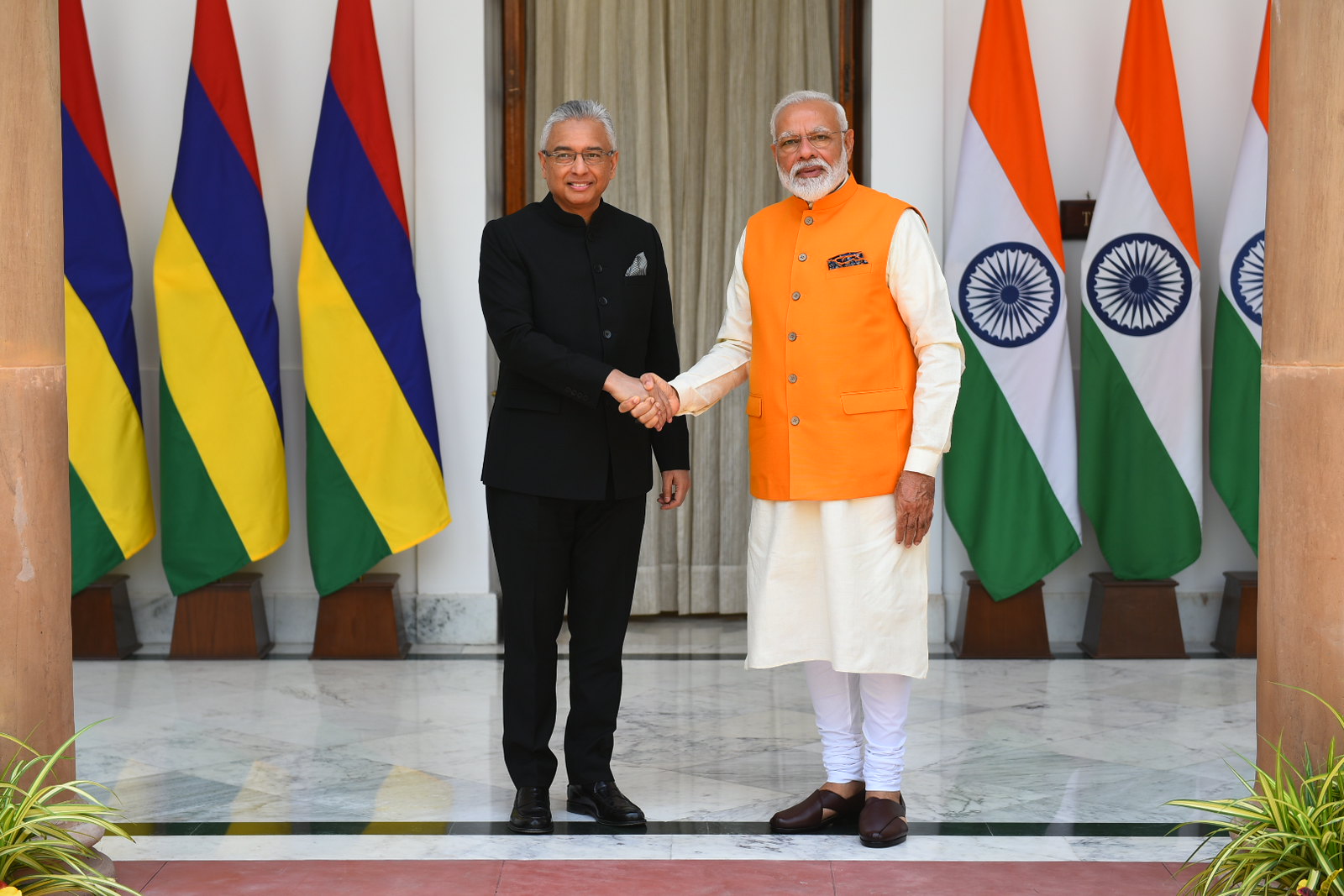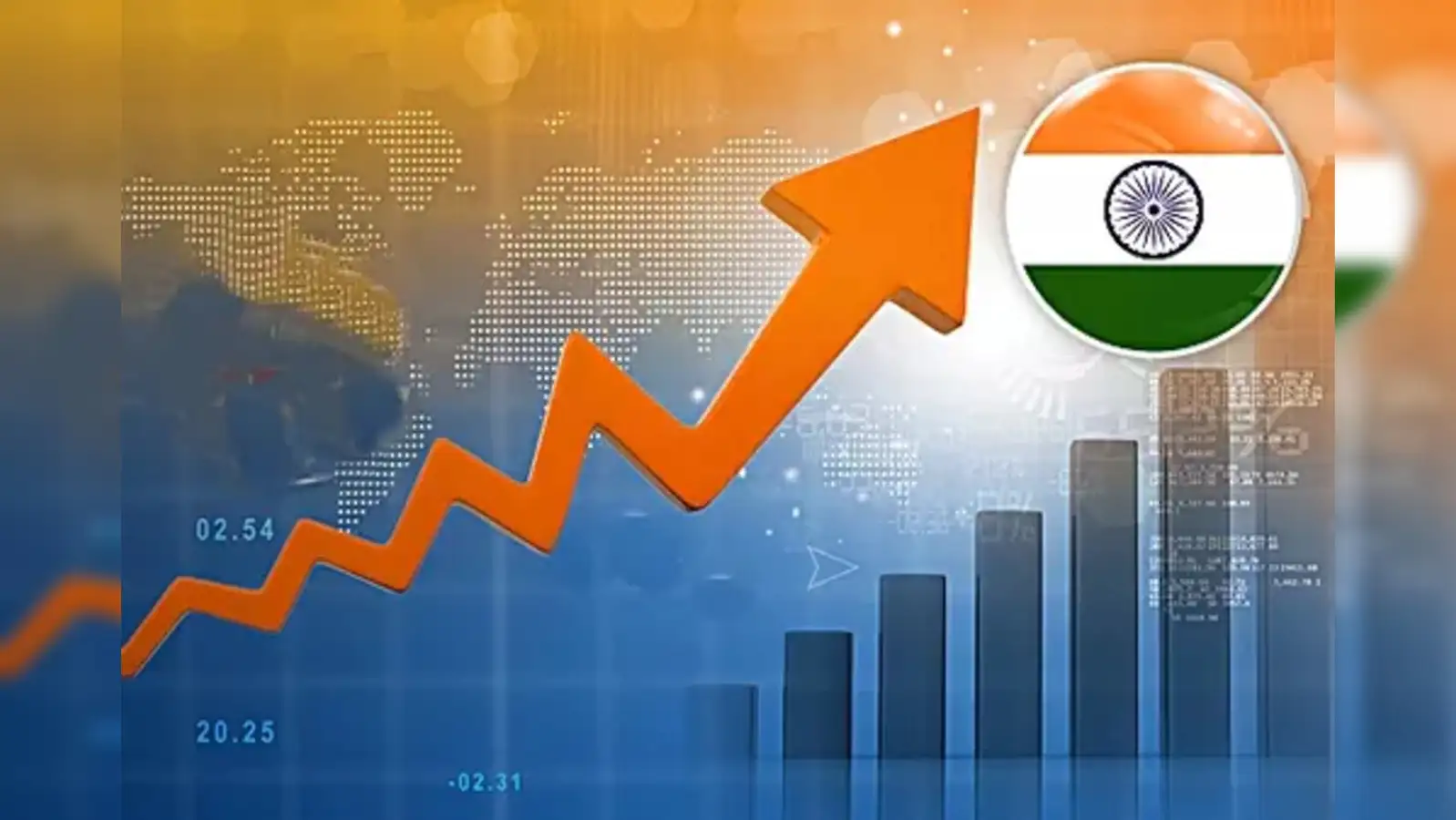India and Mauritius share one of the most enduring and comprehensive partnerships in the Indian Ocean region. Rooted in history, culture, diaspora, and strategic interests, the relationship has evolved into a model of South–South cooperation. For India, Mauritius is both a cultural kin and a maritime ally, while for Mauritius, India remains a reliable partner in development, crisis response, and security.
Historical Linkages
- Colonial Past & Migration: First Indians arrived in Mauritius during French rule in the 18th century. Later, under British rule, Mauritius became a hub for indentured labour.
- Indentured Labourers: Between 1834 and early 1900s, nearly half a million Indian workers migrated to Mauritius. Today, over 70% of the Mauritian population is of Indian origin.
- Aapravasi Ghat: Recognised by UNESCO as a World Heritage Site, symbolising the beginning of indentured labour migration.
- Freedom Struggle Connections: Leaders like Seewoosagur Ramgoolam maintained links with Indian freedom fighters like Subhas Chandra Bose.
- Symbolic Ties: Mauritius celebrates its National Day on March 12—the date of Gandhi’s Dandi March.
- Diplomatic Milestone: India established diplomatic ties with Mauritius in 1948, even before its independence in 1968.
Strategic and Geopolitical Significance
- “Star and Key of the Indian Ocean”: Mauritius’ location astride major sea routes makes it central to India’s Indo-Pacific strategy.
- Maritime Security:
- Member of the Colombo Security Conclave (CSC) with India, Sri Lanka, Maldives, and Bangladesh.
- Coastal radar stations in Mauritius linked with India’s Information Fusion Centre–IOR.
- Agaléga Island Project: India has developed an airstrip and jetty enhancing surveillance and operational reach.
- Gateway to Africa: Mauritius provides access to the African Continental Free Trade Area (AfCFTA).
- Counterbalance to China: India’s presence in Mauritius is critical amid China’s growing influence in the Western Indian Ocean.
Economic and Trade Relations
- Trade Profile:
- India is among Mauritius’ top three trading partners.
- India’s exports: Pharmaceuticals, cereals, cotton yarn, vehicles, mineral fuels.
- Mauritius’ exports: Medical devices, scrap metals, lead-acid batteries.
- Investment Flows:
- Mauritius was India’s largest source of FDI, contributing over USD 177 billion since 2000.
- In 2023–24, Mauritius became India’s second-largest FDI source after Singapore.
- Indian companies are investing in Mauritius’ financial services, manufacturing, and healthcare.
Cultural and Developmental Cooperation
- Institutions:
- Mahatma Gandhi Institute (MGI) (1976) – promotes Indian culture and studies.
- World Hindi Secretariat – global centre for Hindi promotion.
- Indira Gandhi Centre for Indian Culture (IGCIC) – India’s largest cultural centre abroad.
- Capacity-Building:
- ITEC Programme: Mauritius is a major beneficiary.
- Know India Programme (KIP): Strengthens youth connect.
- e-VBAB Initiative: Provides e-learning and telemedicine.

Role of the Indian Diaspora
- Nearly 70% of Mauritius’ population is of Indian origin.
- Over 26,000 Indian nationals and 13,000 OCI cardholders reside in Mauritius.
- In 2024, India extended OCI eligibility up to the seventh generation of Mauritian Indians.
- Diaspora acts as a natural bridge in bilateral ties.
Tourism and Education
- Visa Cooperation: Indians get visa-free entry into Mauritius; Mauritians get gratis visas to India.
- Tourism: Pre-COVID, ~80,000 Indians visited Mauritius annually; ~30,000 Mauritians visited India, especially for medical tourism.
- Education: Over 2,300 Indian students study in Mauritius; Mauritian students increasingly opt for Indian universities.
Challenges in the Relationship
- Taxation Issues: 2016 changes to DTAA reduced Mauritius’ attractiveness as an investment hub.
- China’s Influence: Beijing funds major projects, competing with Indian presence.
- Ethnic Balance: Need to avoid perception of bias towards the Indian-origin majority.
- Drug Trafficking: Mauritius is emerging as a hub in the Indian Ocean narcotics trade.
- Climate Change: Rising sea levels, cyclones, and coastal erosion pose existential threats to Mauritius.
Conclusion
India–Mauritius ties are a unique blend of historical solidarity, cultural affinity, economic cooperation, and strategic partnership. Mauritius’ strategic location makes it indispensable to India’s Indo-Pacific vision, while diaspora bonds make relations people-centric. However, India must navigate taxation disputes, Chinese competition, ethnic sensitivities, and climate challenges with nuanced diplomacy.
For UPSC: This case illustrates India’s diaspora diplomacy, maritime strategy, South–South cooperation, Indo-Pacific policy, and climate change diplomacy—all highly relevant for international relations and GS-II answers.


